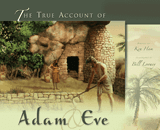
How Could Adam Have Named All the Animals in a Single Day?
Originally published in Creation 27, no 3 (June 2005): 27-28.
How could Adam have named millions of different species on Day 6 if it was only 24 hours? This is a common objection to a straightforward view of Genesis 1.
One important point is that we cannot be dogmatic on the actual number of species on Earth. Oxford University zoologist Robert May writes:
“At the purely factual level, we do not know to within an order of magnitude how many species of plants and animals we share the globe with: fewer than 2 million are currently classified, and estimates of the total number range from under 5 million to more than 50 million” [my emphasis].1
There are several factors, which may not be immediately obvious to the casual reader, that need to be considered. First, Adam did not have to go out and round up or track any of these animals. Genesis 2:19 clearly states that God brought the animals to Adam. Second, although many objectors have claimed that the species Adam had to observe and name would have numbered in the millions, the actual number would almost certainly have been only a small fraction of this.
Adam did not have to go out and round up or track any of these animals.
Note that Scripture explicitly states that Adam named all the “livestock” (Hebrew behemah), the “birds of the air” (Hebrew oph hashamayim) and all the “beasts of the field” (Hebrew chayyah hassadeh). There is no indication that Adam named the fish in the sea, or any other marine organisms, nor any of the insects, beetles or arachnids. In fact, of the two million known species, 98% are invertebrates, which include a variety of animals, from sponges, worms and jellyfish to mollusks and insects. The remaining 2% are vertebrates and number approximately 40,000 species.2 This number is further reduced when the 25,000 marine vertebrates3 and four thousand amphibians4 are discounted, since they clearly do not fit into any of the categories of animals listed in Genesis 2:20.
In addition, assuming that speciation has been an on-going occurrence since creation, the 11,000 vertebrate species in question would have most likely descended from a much smaller number of proto-species. Each would be the ancestors of animals in the group that taxonomists call a genus5 (or possibly the higher taxonomic order known as a family6) and what the Genesis account calls a “kind”.7 Since many genera contain dozens, even hundreds, of species, it is far more likely that Adam had to name only a couple of thousand of these proto-species—a task which could easily have been achieved in a few hours. (Assuming Adam had to name 2,500 proto-species (genera), and he named a single proto-species every five seconds, it would have taken him approximately three hours and 45 minutes to complete the task if we include a five-minute break every hour.)
It is important to note that God’s purpose in parading all the animals before Adam was not merely so that he would give them names. It was also to reinforce the fact that he was different in kind from the rest of creation, so that none of these animals could ever serve as a physical, emotional, intellectual or spiritual companion. So God made from Adam’s rib a companion who was suitable (Genesis 2:21–24).
Footnotes
- May, R.M., How many species are there on Earth? Science 241:1441–1449, 1988.
- Burnie, D., “Animal”, Microsoft® Encarta® Online Encyclopedia 2002, <encarta.msn.com>.
- Orr, J.W., “Fish”, , Microsoft® Encarta® Online Encyclopedia 2002, <encarta.msn.com>.
- Burnie, D., “Animal”, Microsoft® Encarta® Online Encyclopedia 2002, “Vertebrate”.
- Woodmorappe, J., Noah’s Ark: A Feasibility Study, ICR, California, USA, 1996. This tabulates all the creatures on the Ark by assuming that the “kind” corresponded to today’s genera. But this is to be as generous to the sceptics as possible, and even then there would be only 16,000 animals on the Ark as obligate passengers.
- Batten, D., Ligers and wholphins? What next? Creation 22(3):28–33, 2000. This points out several examples of fertile hybrids between members of different genera within a family. This means that they are really a single polytypic species, and supports identification of the kind with today’s families.
- Williams, P.J., What does min mean? TJ 11(3):344–352, 1977.
Recommended Resources

Answers in Genesis is an apologetics ministry, dedicated to helping Christians defend their faith and proclaim the good news of Jesus Christ.
- Customer Service 800.778.3390
- Available Monday–Friday | 9 AM–5 PM ET
- © 2026 Answers in Genesis

